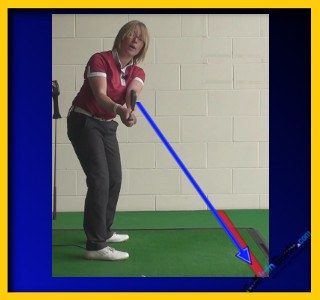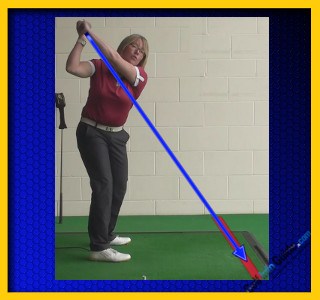
If you have ever watched any golf on the television, you will often hear the commentators talk about how the professionals swing the club nicely on the plane.
There are different points within your golf swing where you can check that the club is on the right swing plane. One of the most crucial areas is to ensure that the club is on the right swing plane at the top of your backswing.
If you consider that a full golf swing should point the golf club horizontal to the ground at the top of the backswing, it could also be noted where the golf club points in terms of its direction. A correct full swing that has swung on the right plane should result in a golf club shaft and club head that points directly to the intended target.
It may be easier to check this position with the use of a video camera or a mirror. For the right-handed golfer, if the club is pointing to the left of the target line at the top of the swing, it can be described as a laid off position.

Conversely, if the club is pointing to the right of the target line at the top of the backswing, it could be classed as across the line. Both of these positions can result in either a flawed downswing or a manipulated downswing where the golfer has to fight quite hard to get the golf club back onto the correct downswing line in order to make a consistent and accurate contact with the golf ball.
If your golf swing takeaway is too inside and flat around your body at the start of your backswing, this will often be lifted up in the second half of the backswing and create an across the line position at the top of your swing. And likewise, a swing that is too steep and outside the line of your body in the early stages of your backswing could result in a golf swing that is too flat or laid off at the top of your swing.
A club that is swung back on the correct plane is far easier for the golfer to bring down on the correct plane and hit straighter, more consistent golf shots with less manipulation.






